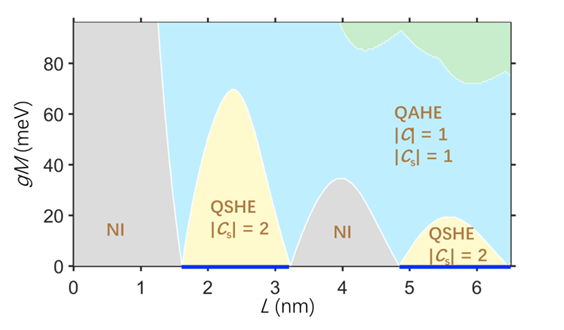Routes to quantum anomalous Hall effect from magnetic topological insulators MnBi2Te4/(Bi2Te3)n
摘要:
The rising of topological materials MnBi2Te4/(Bi2Te3)n with built-in magnetization provides a great platform for the realization of both Chern-insulator and axion-insulator phases, manifesting integer and half-integer quantum anomalous Hall (QAH) effects, respectively [1-3]. Using both model Hamiltonian and first-principles calculations, we demonstrate that rich 2D and 3D topological phase diagrams can be established with the mapping of MnBi2Te4/(Bi2Te3)n systems. For the 2D topological phases, we provide design principles to trigger integer QAH states by tuning experimentally accessible knobs, such as slab thickness and magnetization [2]. For the 3D topological phases, we find that the surface anomalous Hall conductivity in the axion-insulator phase is a well-localized hanging around e2/2h, depending on the magnetic homogeneity [3]. We then discuss the preconditions and several experimental proposals to reveal the surface anomalous Hall effect in MnBi2Te4/(Bi2Te3)n. Finally, some experimental progresses and theoretical insights on the issue of the surface gaps in MnBi2Te4/(Bi2Te3)n is discussed (if time permits) [4-7].

References
[1] C. Hu et al. Nat. Commun. 11, 97 (2020).
[2] H. Sun et al. Phys. Rev. Lett. 123, 096401 (2019).
[3] M. Gu et al. arXiv:2005.13943 (2020).
[4] Y. Hao et al. Phys. Rev. X 9, 041038 (2019).
[5] X. Wu et al. Phys. Rev. X 9, 041038 (2020).
[6] X. Ma et al. arXiv:2004.09123 (2020).
[7] R. Lu et al. arXiv:2009.04140 (2020).
